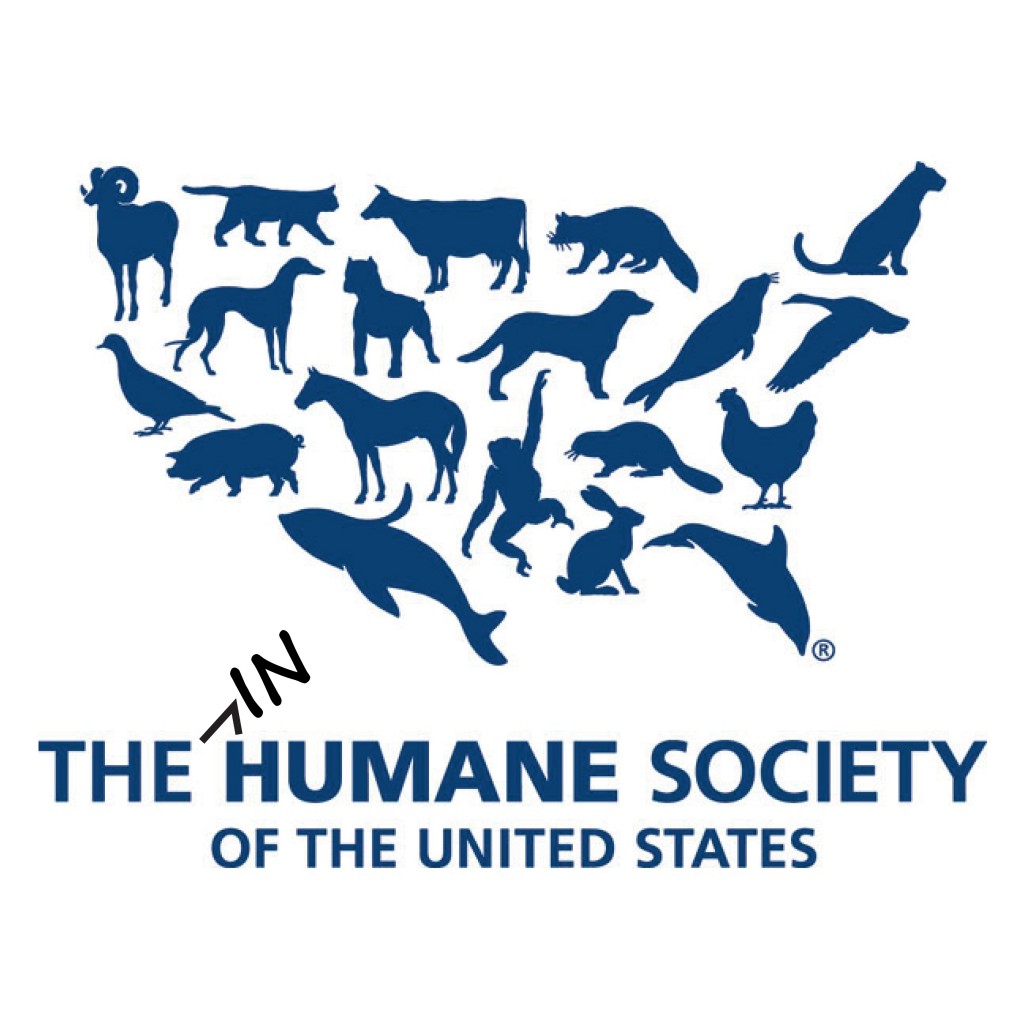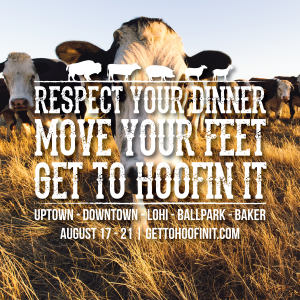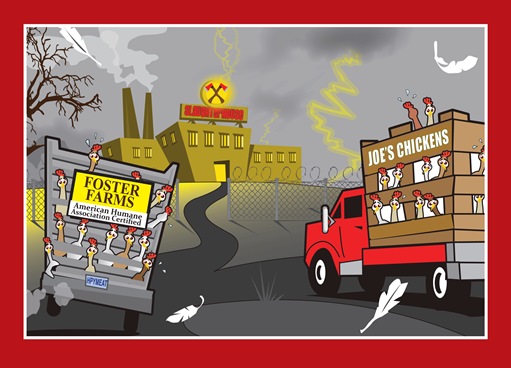And pays people to eat them.

First, I was influenced by a mother who was the neighborhood cat lady. Second, I was fortunate to have life-altering experiences working with two local No Kill shelters while attending law school. Third, I was deeply troubled by the animal protection movement’s philosophical embrace of the killing of companion animals. Finally, I was inspired by the legal and societal precedent-setting potential for all animals embodied in the concern and love most Americans already have for companion animals. As a result, I decided to focus most of my time and energy on an issue which I saw almost no other activists with an animal-rights orientation addressing: shelter killing.
Over the last two decades, that is precisely what I have done. As a former director of two of the most successful shelters in the nation and the current Executive Director of the No Kill Advocacy Center, a non-profit organization working to bring an end to the systematic killing of animals in shelters, companion animals are the animals on whom I have focused most of my professional time and energy. But that doesn’t mean I don’t care about the suffering or plight of other animals any less. And that is why I have always lived my life according to a simple ethos: do no harm; a maxim that is reflected in what I eat, what I wear, how I spend my consumer dollars, how I respond to the animals in need who cross my path, and how I am raising my children, among other things. It is also why my wife and I authored All American Vegan, a vegan primer and cookbook that seeks to inspire other No Kill advocates and everyday dog and cat lovers to likewise embrace a compassionate way of eating.
Nonetheless, in spite of these efforts to promote veganism and my long, personal identification as an animal rights activist, some people—often those new to my Facebook page or the cause of No Kill—have certain preconceived notions about who I am or should be, and what I should be allowed to say on my own Facebook page (a form of censorship with which they would no doubt take great offense were similar limitations to be dictated to them about permissible content on their own page). And often, that means not only surprise and frustration but sometimes even anger when I post about other animal related issues that matter deeply to me but do not concern the plight of companion animals.
Sadly, it seems that there will always be a portion of the followers on my page who I cannot please: animal rights activists who accuse me of not caring about other animals beyond dogs and cats simply because I have chosen to focus most of my effort on those animals (a criticism I doubt they would ever make of other animal rights activists focusing exclusively on more traditional animal rights issues such as animal agriculture or fur), and on the flip side, No Kill advocates who attack me for expressing concern about other animals beyond dogs and cats, such as a pit bull advocate who called me an “extremist” for a comment I made on the Facebook page of a No Kill colleague in defense of chickens after other No Kill advocates defended their killing. To the latter group, the fact that I do not wish any animal to experience pain, suffering or a premature death, instead of limiting my compassion to dogs and cats labels me an “extremist.” My response? To thine own self be true.
And that is why when I see the nation’s large, so-called “animal protection” groups—most notably, the HSUS, the ASPCA and AHA—behaving as unethically towards cows and chickens as they have historically behaved towards dogs and cats, I must say so. Not only do the animals these groups are throwing under the bus in deference to those who systematically abuse and kill them deserve a voice, too, but there is value in exposing the hypocrisy and philosophical rot that permeates these corrupt institutions at every level. Often, people want to compartmentalize the malfeasance of these groups: to argue that their different divisions are separate and distinct from one another and that an institutional culture which allows for the thwarting of shelter reform efforts, which defends shelter killing and even celebrates shelter directors who oversee facilities where animals have suffered horrible abuse and senseless deaths, is none-the-less capable of a morally consistent and effective agenda for wild animals, animals abused and killed in agriculture or in other spheres. As several recent campaigns by these groups to promote the lie of “humane” meat clearly demonstrate, not only is this view ill-informed and naïve, but dead wrong.
A couple of weeks ago, Jennifer and I ate at one of the newest locations for a chain of vegan restaurants whose food we absolutely love: Veggie Grill. And like virtually every other time we have eaten at Veggie Grill, we were thrilled to see the restaurant not only packed, but filled with a broad array of people from all possible demographics—old and young, male and female, entire families, businessmen in suits and tattooed hipsters. This popularity is also reflected in the expansion of Veggie Grill which has opened 25 locations since its debut in 2006. With delicious, faux meat sandwiches that mimic the real thing, Veggie Grill is proof positive that if you make it delicious and familiar tasting, vegan food can have tremendously broad appeal, especially among an American public that is becoming increasingly conscious about the animal suffering and killing enabled by their consumer choices.
Perhaps it was this awareness that compelled the pizzeria next door to attempt to compete by advertising itself in two ways. On one side of the door was writing upon the window advertising its wide array of vegetarian offerings. I was happy to see a pizzeria using its meatless options as a possible selling point. But my enthusiasm for the pressure Veggie Grill was obviously placing on the pizzeria was immediately eviscerated when I noted what was written on the other side of the entry door, a statement so oxymoronic as to make my head spin: “cruelty-free meat.”
Although the number of companies that disingenuously refer to their meats, eggs, and dairy products as “humane” has rapidly increased over the last several years, I had yet to encounter such a blatant co-option and misappropriation of that particular term and certainly never before to describe meat. Historically, the term “cruelty-free” has been used to describe products made without animal testing. It was coined by a vegan who never would have imagined it would someday be used to describe animals killed for food. But sadly, as more and more companies scramble to respond to a public that is increasingly weighing the moral implications of their food choices, lies like this are becoming more common. Enabling its spread are corrupt “animal protection” groups such as HSUS, the ASPCA, and the American Humane Association which not only pay lip service to the lie of “humane meat,” but get rich in the process of doing so. There is a lot of money to be made partnering with the people who harm animals, and these groups are feeding at their troughs.

Case in point: two weeks ago, HSUS unrolled its “Hoofin’ It” campaign, sponsoring a week long event in Denver celebrating the killing and eating of animals. “On Sunday you can get bison; Monday ‘sheep is the star’; Tuesday is pig night; Wednesday it’s cow”.
The catch: HSUS claims they were raised and slaughtered “humanely.” But these claims are untrue by definition. There is no such thing as “humanely” killing an animal who does not want to die, and killing animals is an inherent part of the production of meat, eggs and dairy products, as are confinement, reproductive manipulation, social deprivation, and physical mutilation, all ending with getting their throats slit. Indeed, on the Hoofin’ It website, they boast of some animals being killed—or what they euphemistically call “harvested and processed”—after living only 24-30 months despite a natural lifespan of 25 years. We’re told that the methods they use are important for one primary reason: they make the animals more “delicious.”

Not to be outdone, the ASPCA gave money—$50,000 in donations given to them to save animals—to a for-profit company so that they can kill more chickens. And AHA, the long the ignored stepchild of the “big three,” decided to top them all: awarding Foster Farms the American Humane Association’s “Humane Certified” label which now appears on the package of every dead Foster Farms chicken sold in America, in exchange for an undisclosed sum of money and agreement to standards which often do little more than codify cruel industry practices. Like HSUS and the ASPCA, AHA lulls people into a false sense of complacency that supporting a company which abuses and kills millions of animals a year is consistent with a belief in animal protection. And what, exactly, do they mean by “humane”?
- Does AHA prevent animals from being kept in crowded indoor cages in warehouses? No.
- Does AHA require chickens to be allowed to go outside, to get fresh air and sunlight, to be able to act in accordance with all of their instincts to ensure their happiness and psychological as well as physical well-being? No.
- Does AHA prohibit beaks from being cut off? No.
- Does AHA prohibit the use of masticators—giant machines in which unwanted, live baby chicks are ground up while alive and fully conscious? No.
- Does AHA prohibit chickens from being hung upside down by the legs and feet (legs and feet that are often suffering from terribly painful joint diseases), being electrically stunned, and having their heads cut off? No.
- Does AHA prohibit the cutting of the teeth of piglets? No.
- Does AHA prohibit cutting off the tails off pigs? No.
- Does AHA prohibit the use of electrical shock on cows? No.
- Does AHA prohibit the use of restraints to forcibly inseminate a cow or a pig? No.
- Does AHA prohibit the use of a gas chamber to kill despite calling it “inhumane to all animals”? No.
- Does AHA prohibit the castration of newborn calves by a rubber band being placed around their scrotums to cut off blood supply? No.
Finally, under what warped definition of “humane” can a process that ends with animals having their throats slit possibly qualify? The kind where AHA is paid to say it is.
Whether it packaged as “humane meat” or “pet overpopulation,” the idea that killing animals is acceptable if done for the right reasons, by the right people or under the right circumstances are merely different manifestations of the same insidious lie that permeates and hinders the animal protection movement at the beginning of the 21st century: that killing animals who are not suffering can ever be humane. It can’t. It isn’t. And if HSUS, the ASPCA, and AHA are going to claim to speak on behalf of animals and raise money off their plight, then morality and integrity compel them to challenge and stand up to this pernicious idea, not perpetuate it, even if it upsets their donors, their corporate handlers, or the people on their Facebook pages.
————-
Have a comment? Join the discussion by clicking here.